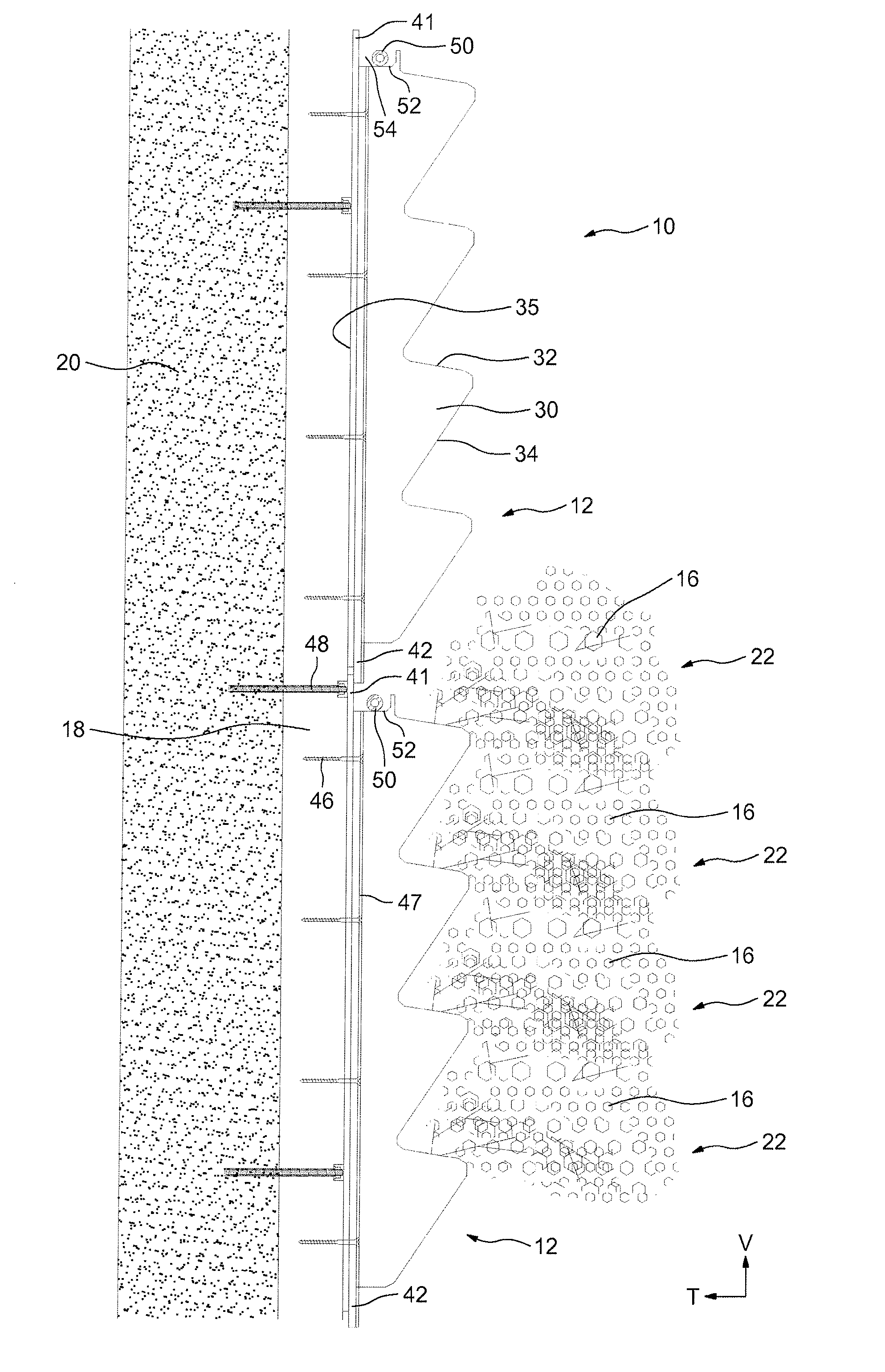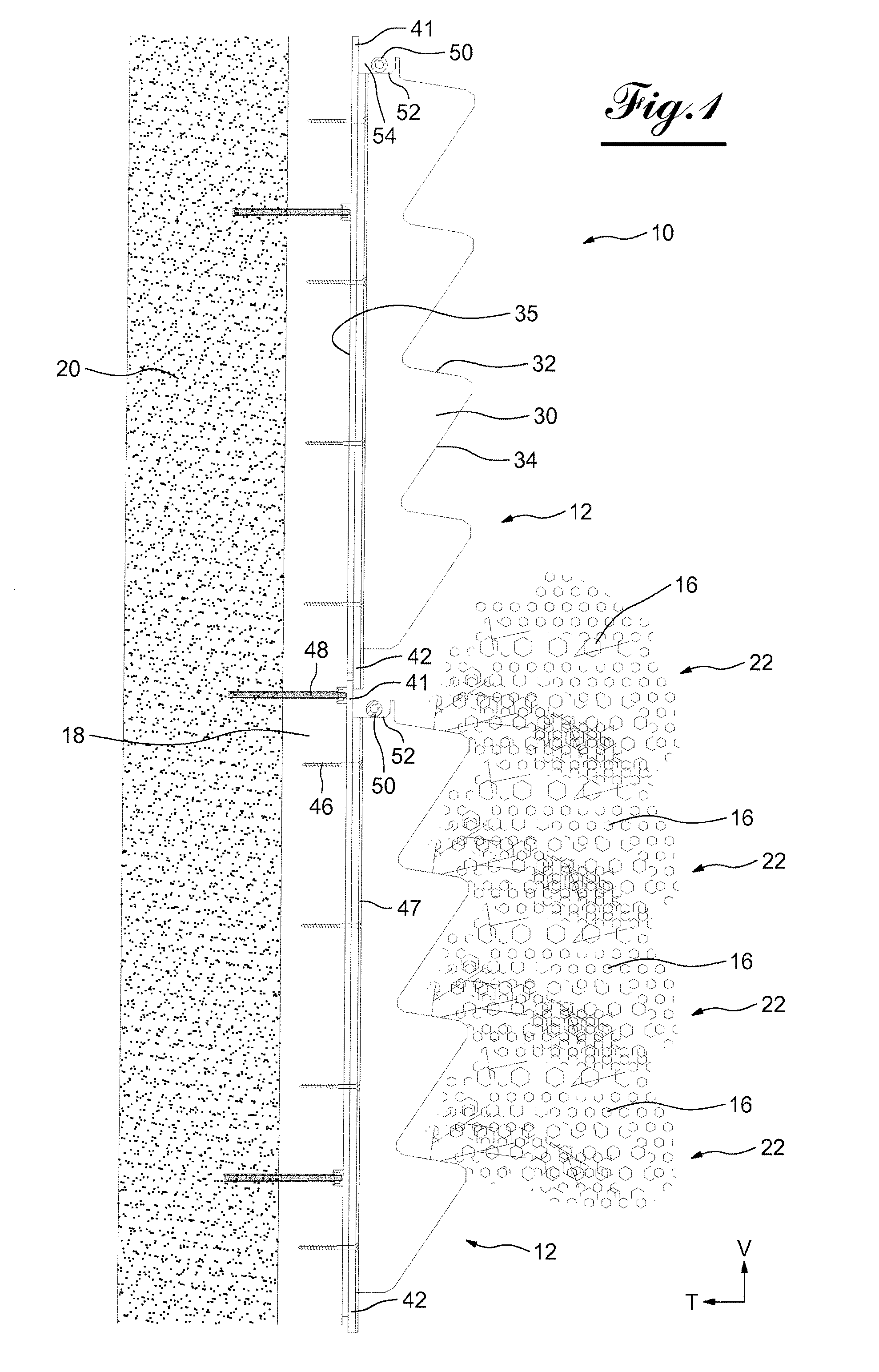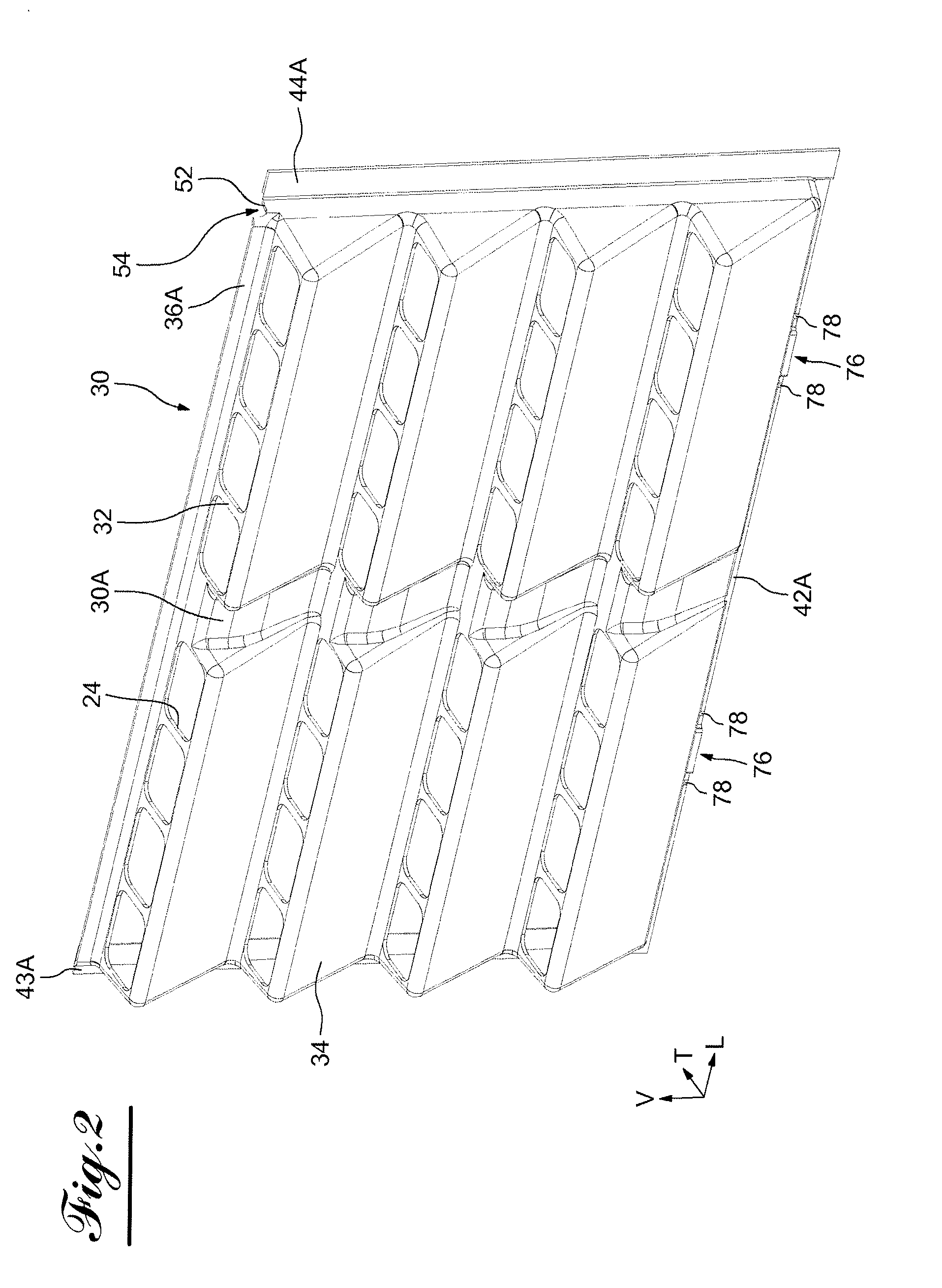Device for a vertical or angled arrangement of the hydroponic cultivation of plants
a technology of hydroponic cultivation and device, which is applied in the direction of self-acting watering devices, watering devices, horticulture, etc., can solve the problems of not losing nutritive substrate, difficult to fix this type of system, and plant growth problems
- Summary
- Abstract
- Description
- Claims
- Application Information
AI Technical Summary
Problems solved by technology
Method used
Image
Examples
first embodiment
[0051]In the system 10 represented in FIGS. 1 and 2, as installed vertically parallel to the wall 20 of a building, each module 12 is about 80 centimeters tall and 130 centimeters long. The module 12 is designed for four horizontal rows 22 of plants, distributed evenly along the height of the module.
[0052]The plants 16 have parts, in this instance stems and foliage, which pass through at least one opening 24, for their exposure to light.
[0053]As shown in FIGS. 1 and 2, the rows 22 can each receive eight bundles of plants 16, each bundle corresponding to an opening 24. The openings 24 are distributed into two groups 24A of four.
[0054]The internal volume 14 (FIG. 4) is delimited on one side by a front wall 30 comprising openings 24 suitable for plants 16 to pass through.
[0055]Each group 24A of four openings 24 is made in a basically horizontal part 32 of the front wall 30, this part enabling the nutritive substrate to be securely retained during planting of the plants. Each basically ...
second embodiment
[0086]a module according to the invention, which is a variant of the embodiment described above, is shown in FIGS. 6 to 14.
[0087]In this embodiment, the modules are of different sizes, in other words 1 meter high by 80 centimeters long. The openings 24 are larger and there are four per row, still divided into two groups, to permit wider spacing between plant bundles.
[0088]The stop lugs are not there, but the stop function is achieved by the top edges 41 abutting as necessary against the recess resulting from the offset 45C (FIG. 11) between the bottom edge 42B and the rear face of the rear wall 35 close to the space 45B situated between the bottom edge 42B and the internal horizontal edge 72. The assembly of the edges is kept as it is, as may be clearly seen in FIGS. 13 to 15.
[0089]The differences mainly concern the partitioning ribs 60.
[0090]Each partitioning rib 60, at the top and bottom of the levels, comprises a basically triangular section. It comprises a top face 82 sloping fo...
third embodiment
[0105]In a third embodiment represented in FIGS. 19 to 22, the modules are of a general triangular shape instead of rectangular, in order to be positioned in a lozenge configuration on a wall, as decoration and thermal insulation partially covering a facade. The rows of plants are adapted to the shape of the modules. The overlaps of the vertical and horizontal walls are made in accordance with the same principle as that described above, with the overlapping edges covered by judicious recesses 45.
[0106]FIGS. 23 to 27 show an embodiment of the system of the invention mainly intended for internal use, for example to divide a large space into several workplaces and thus obtain a “landscaped office”.
[0107]The system of the invention comprises several modules 112 fixed to vertical mountings 118 joined to a base 120 possibly mounted on wheels 121 so as to be mobile.
[0108]Each module 112 comprises two horizontal rows 122 of two compartments 123 connected to each other. However each compartm...
PUM
 Login to View More
Login to View More Abstract
Description
Claims
Application Information
 Login to View More
Login to View More - R&D
- Intellectual Property
- Life Sciences
- Materials
- Tech Scout
- Unparalleled Data Quality
- Higher Quality Content
- 60% Fewer Hallucinations
Browse by: Latest US Patents, China's latest patents, Technical Efficacy Thesaurus, Application Domain, Technology Topic, Popular Technical Reports.
© 2025 PatSnap. All rights reserved.Legal|Privacy policy|Modern Slavery Act Transparency Statement|Sitemap|About US| Contact US: help@patsnap.com



